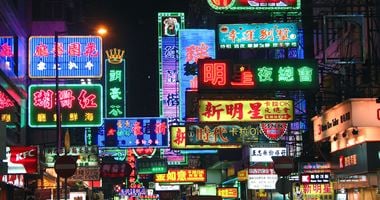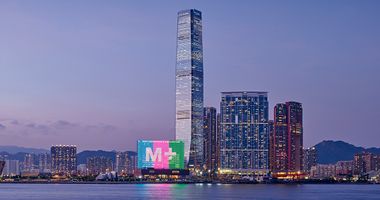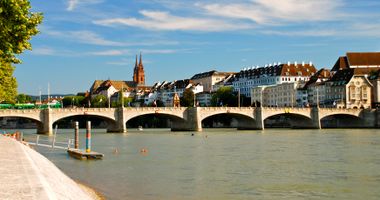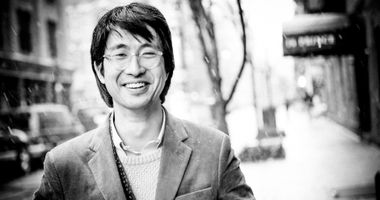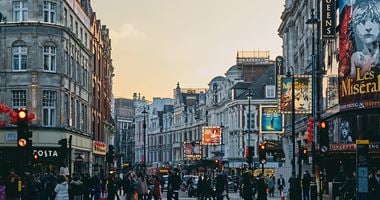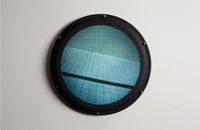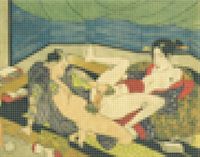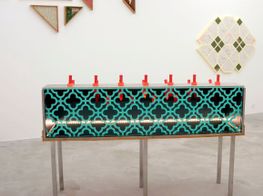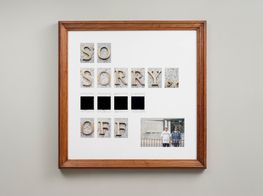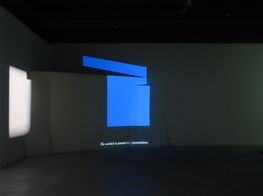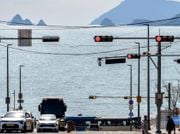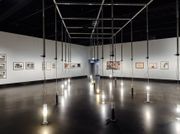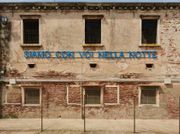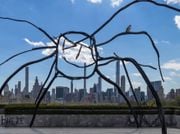Marc Spiegler

Marc Spiegler really needs no introduction. He is both the formidable director of Art Basel since 2007, and a permanent fixture we see walking around Art Basel's halls, be it in Basel, Miami Beach or Hong Kong.
Spiegler was once a journalist himself: a writer based first in Chicago and later in Zurich who wrote for publications that he admits vary wildly in focus, from ARTnews, to New York Magazine and Sports Illustrated. ('Which made me either a wide-ranging writer or a dilettante,' he writes.)
Before joining Basel in September 2007, Spiegler launched the blog, www.artworldsalon.com with writer, researcher, and consultant András Szántó, and co-founder of Wired magazine, Ian Charles Stewart. Spiegler described the blog as a moderated digital discussion forum 'focused on the fast-paced transformations taking place in the global art world'.
Topics of discussion included 'the economic shifts roiling its markets; its internationalisation and expansion; the impact of technological developments; and the rapid changes in the broader perception of the art world and the art world's perception of itself.'
In many ways, this interview considers those very things, too, albeit through the lens of Art Basel, a fair that has, since its inception in 1970, continued to set the standard for what an art fair is, and how it functions.
In this extensive interview, Spiegler discusses the impact of Art Basel in Hong Kong not only on the city, but also on Art Basel, talking about how global expansion has brought a more regional focus to each edition. Spiegler also considers how Art Basel is moving into the future—in what he describes as the fair's third stage of development.
The fact that you have great galleries and collectors coming every year to Hong Kong says a lot about the city.
SBWhat impact has Art Basel had on Hong Kong from your perspective?
MSFor Hong Kong-based artists like Adrian Wong, Nadim Abbas or Lee Kit, I think the fair has made people worldwide more familiar with their work. I was talking to Adrian a few weeks ago and he told me that as a result of the fair he has more serious collectors and curators coming to his studio and commissioning works from him than before. And I think this has had its effect on the studios in Fotan, too.
As for the galleries in Hong Kong, the fact that you have an amazing cross section of the art world coming into your gallery every year gives you a chance to highlight your programme and to build relationships that continue throughout the year.
For museums and public institutions, it is a chance to build their reputation, just as the collections and museums in Miami have always put on killer shows in December. As for the city of Hong Kong, we are playing a role in their campaign to position themselves as the cultural city of Asia, but we are only part of it: there's M+, the Hong Kong Arts Festival and so on. The fact that you have great galleries and collectors coming every year to Hong Kong says a lot about the city.
Then in the broader sense of art world geopolitics, we want the Hong Kong show to be a great platform for galleries and their artists. It's about building bridges between East and West, in a sense—creating opportunities for Asian artists in the East and Western artists in the East.
Equally important, there are about six or seven distinct regions within the Asian art scene, depending on how you define it, and a big part of what we do is connecting these regions, since there's currently probably more exchange between the Japanese and Korean scenes with Europe than with India, for example. So there is this large East-West bridge but also a series of smaller and equally significant bridges that we want to help build within Asia.
Speaking more concretely, we have never seen more Latin American collectors in Basel than since Art Basel came to Miami Beach.
SBI wanted to consider this notion of building bridges so as to zoom out and think about how the three fairs are working together so as to produce this kind of truly global super highway...
MSThere are many synergies between the three shows. On the one hand, our vision is not to bring the same galleries to all three places, but to build a great platform for galleries and their artists on three continents for those galleries who feel that their artists are well suited to that continent to have the chance to show.
Speaking more concretely, we have never seen more Latin American collectors in Basel than since Art Basel came to Miami Beach. When it was announced that Art Basel was going to have a show in Asia—even before we transformed Art HK into Art Basel's Hong Kong show—we already started seeing Asian collectors not only come to Basel for the first time, but also to Miami Beach.
And what we're seeing is a general cross-pollination between gallerists and collectors. For example, an Asian gallerist might develop a relationship with a Berlin gallerist because they are positioned opposite one another in the fair, or a collector from Japan might meet an American in Florida and encourage them to come to Hong Kong.
Of course, Art Basel is a single organisation and I think people who have come to trust us to not waste their time.
They feel assured that if they decided to visit Hong Kong, it will be a well-organised week, the galleries will be of the highest quality, and so will be the programme. Because it takes a lot of trust to follow a fair halfway around the world, whether as a gallerist or as a collector.
You could have a great gallery for Basel in Europe, but it might not be necessary for it to be in Miami Beach.
SBAnd in thinking about this broadening global scope, I wanted to think about the way the expansion of Art Basel into Hong Kong has affected the focus of each fair, in that there seems to be more emphasis on the regions in question.
In other words, it seems Art Basel, in its expansion, has become more localised in the scope of each fair?
MSThis is interesting and counterintuitive. Speaking in the most general terms, I can say that now we have a fair on all three continents, the selection committees are thinking more regionally.
For example, you see a lot of really great Latin American artists in Miami: artists you never see at other fairs. But when I started at Art Basel the percentage of Latin American galleries participating in Miami Beach had dropped not by choice, but by chance. So we started to open it up more to Latin American galleries again.
Now what's interesting is that there are a lot of galleries that do Basel who don't get into Miami Beach. Which is very surprising to people because they think, of course, Basel is the best fair in the world and if you're in there, then you should be in the other editions.
But this is not the case, and those who are most surprised are the galleries not accepted. The committee's logic is this: You could have a great gallery for Basel in Europe, but it might not be necessary for it to be in Miami Beach. And given that we only have roughly 115 slots for Western galleries in the Hong Kong fair, I think the committee will say relatively soon that some galleries are the right galleries for Basel and Miami Beach but maybe not for Hong Kong.
In Hong Kong we place immense billboards, but in Basel that would be seen as madness.
SBIn Hong Kong last year you said some thing that was really telling: that Western galleries were no longer second guessing the market, and that Eastern galleries were upping games. Could you talk about the lessons Art Basel has learned from its expansion into Hong Kong?
MSAt a very fundamental level, the fair in Miami Beach developed organically.
Some things were done in a very similar way to how they were done for Basel, while other things were done completely differently and more ad hoc. When you add a third fair, it can't be ad hoc anymore. You have to decide what must be the same everywhere and what is regional: what are the things that must be different.
For instance, the rigour of the selection process should be the same everywhere, but the outcome of the selection process should be different everywhere. And I think the quality and effort we put into promotion should be the same everywhere, but the tactics have to be different. In Hong Kong we place immense billboards, but in Basel that would be seen as madness.
We put a lot of emphasis on social media too, but in China that would be through Weibo and WeChat, and in the West through Facebook and Instagram. So we had to do a profound analysis: an inventory on which things had to be globally consistent and which needed to be locally specific.
... there is a chance every year for people to see great art from all over the world
SBThinking about how Art Basel affected Miami's art scene and the ecosystem that grew around it, what is Basel's vision for Hong Kong in terms of the generative effect the fair has had on Miami?
MSI would hope and assume that a lot more people who can afford to buy art and support institutions in Hong Kong will become interested in art—not only because of us but also because of the general growth of culture in the city.
That would strengthen the local patronage base. And in a broader sense, I think in a city where there are no large-scale museums for art at the moment, there is a chance every year for people to see great art from all over the world, which will create a greater sense and sensitivity for art.
How that evolves in terms of galleries, institutions and non-profits, is hard to say. There are structural issues—real estate pricing, government regulations, and government support for the arts, for instance—which we don't affect directly. But what we can do is encourage a greater sensitivity and awareness.
Art Basel is an organisation that creates opportunities for galleries and their artists, and the fairs are the classical and original articulations of that.
SBThis is a nice point to think about diversification of Art Basel's programme, both in terms of its individual editions and the fair as a singular entity. This is of course related to the evolution and development of Art Basel's model from its inception to now.
MSIt's funny that we are having this conversation as I am looking at a sign for the crowd-funding campaign we've just started with Kickstarter.
I'd say we are entering the third stage of Art Basel. The first stage was from roughly 1970 to 1995. This was when Art Basel was a market platform, consisting of the trading halls that catered mostly to buyers and sellers. Then it became a cultural event, and Miami Beach played a huge part in this evolution because it wasn't just about art and cultural events but the crossover to design, music and fashion.
In the last few years, we saw that we could have a global impact. At the same time, we have seen changes in the art world that have made it more difficult for galleries and non-profits, which has made us realise that the world that supports the Art Basel model and which Art Basel supports shouldn't be taken for granted.
This means we are now entering a stage when we take on a much more proactive role in terms of supporting things we believe in, and the Kickstarter partnership is a really great example of that.
We had, on the one hand, the dire need of non-profits for more support and visibility, and on the other hand this huge global community we've built up online, on Facebook, Instagram and Twitter, for instance. And the Crowdfunding Initiative was a perfect way for us to connect the two.
Likewise in Hong Kong, we just launched this course for young collectors in collaboration with Hong Kong University and Central St. Martins. On a much more pragmatic level, but also very important, is that we've worked with the Royal Academy in London to bring one of their great experts in art handling to Hong Kong and do an art handling course with galleries, museums and freight handling companies.
SBWould you say this is a case of Art Basel going beyond a bubble: moving outwards into the public, and further expanding its reach beyond the confines of the fair?
MSArt Basel is an organisation that creates opportunities for galleries and their artists, and the fairs are the classical and original articulations of that. But more and more you will see us do things outside of the fairs which work to support the galleries and their artists and the ecosystems around them.—[O]


